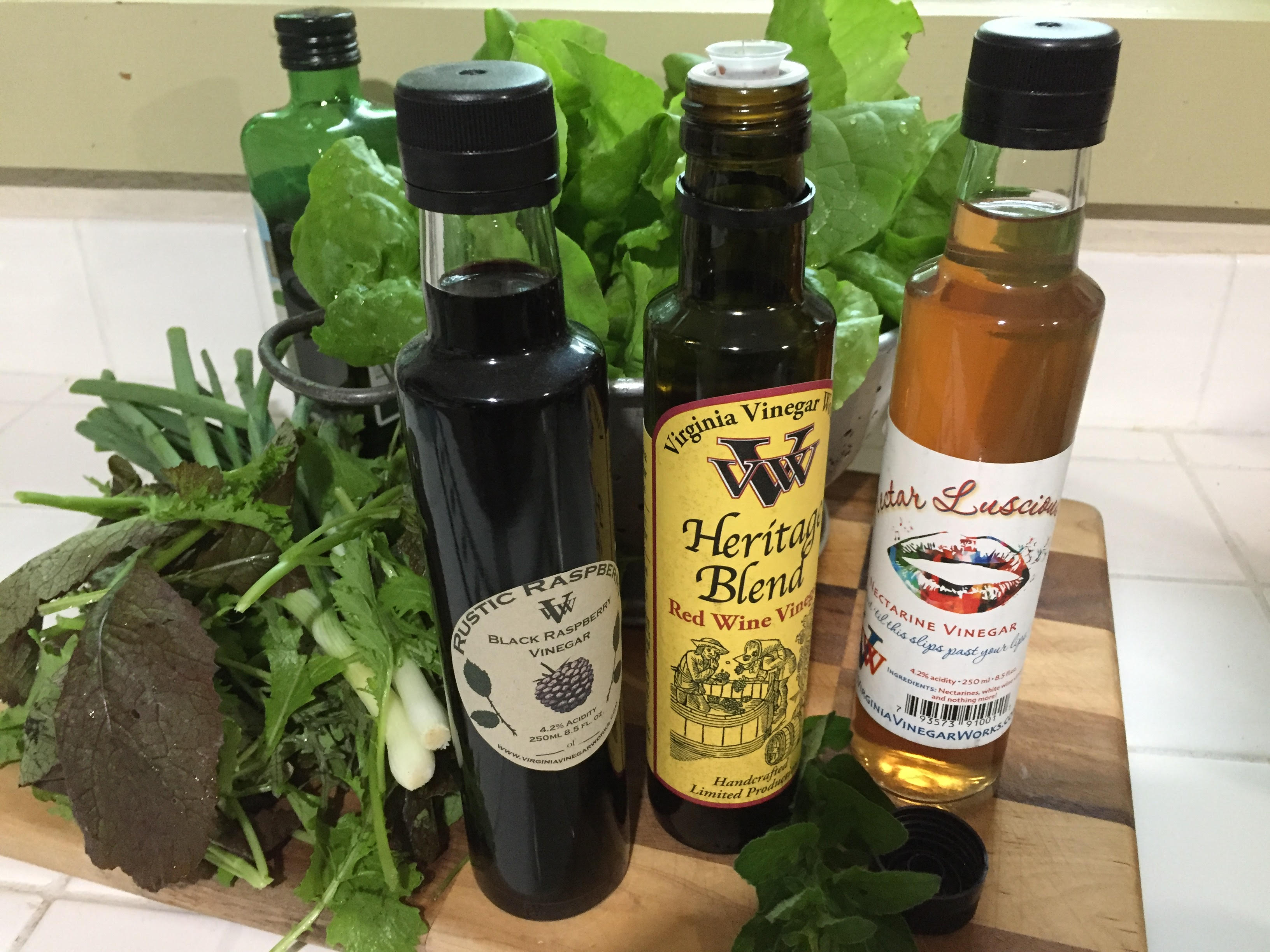Flavor Profiles & Basic Vinaigrette Recipes
Posted by on May 13th 2019

Vinegar is associated with sourness and sourness is one of the basic flavor profiles. The word vinegar itself comes from the French 'vin-aigre' meaning sour wine. The most commonly agreed upon flavor profiles are salty, sour, sweet, bitter, fatty and umami. Umami was added to the basic flavor profile group in 2002. It means savory or meaty in Japanese. Others have described it as “earthy.”
There is disagreement amongst chefs on a few flavor profiles. Some cooks have dismissed fat as a flavor profile. We like to consider fat as a flavor profile. When we taste a fatty dish, we can identify the flavor of fat as a distinct richness. Other cooks equate umami with salty. We like to consider umami and salty as two distinct profiles as meaty/earthy and salt can be identified as two separate flavors in the same dish. Other cooks enhance the list including spicy or heat as a flavor profile. In spite of some technical reasons for excluding it (spiciness or heat is felt not tasted) we like spicy and heat as a flavor profile. Spiciness adds too great a contribution to the end result of a dish. Think of how pepper adds “zip” to a dish!
Good cooks instinctively try to balance these seven flavors in a completed dish. For example, a cook will know when a dish is too salty, or too sweet, or too bitter or sour or fatty or spicy. A cook will know when it is time to enhance or round out the savory profile of a dish.
Flavor profiles interact with each other so vinegar, because it is sour, interacts with the other flavor profiles. For instance, vinegar can cut through fat balancing out the dish. It can reduce the sweet profile if a dish is too sweet. It can reduce the amount of salt needed for a dish. It can both enhance and mellow out the spiciness of a dish. It should be noted that much of the popularity of Japanese, Chinese, or other Asian cuisine is due to the balance achieved with these flavor profiles.
A vinaigrette has all of the elements of the flavor profiles. And a good vinaigrette achieves a balance of flavors – keeping in mind what meat or vegetable or fruit it is meant to enhance. For instance, if it is being made to sprinkle on a sweet spring salad, it may be wise to add a touch more sourness or spiciness to the vinaigrette. If it is being made for a kale salad, because some kale is bitter, it would probably be wise to enhance the sweetness of the vinaigrette. These vinaigrettes will get you started. But half the fun is experimenting with ingredients that give you that deft and enviable combination of flavors.
VINAIGRETTE RECIPES
Here are four vinaigrette recipes just in time for the plethora of spring greens and lettuces available from home gardens and local markets. Add in those early radishes, spring onions, peas or maybe a few fresh picked strawberries!
There is nothing harsh about Steph and Jay’s vinegar. Most cookbooks call for a ratio of 4 (oil) to 1 (vinegar). Our experience with Virginia Vinegar Works vinegar is that a ratio of 1 to 1 or 1 to 2 brings out the wonderful depth of flavor of the vinaigrette.
Red Wine Vinaigrette
Try tossing roasted vegetables with this!
- 2 tablespoons Heritage Blend Red Wine Vinegar
- 2 tablespoons good olive oil
- ¼ teaspoon Stone Ground Mustard
- ¼ teaspoon black pepper
- ½ teaspoon kosher salt
- ¼ teaspoon black pepper
- ¼ teaspoon sugar or honey if desired
Place all ingredients in a mason jar and shake. Taste and adjust seasonings.
Nectarine Vinaigrette
This is especially tasty with a kale salad, adding in seasonal berries and fruits. Toss in a few toasted pumpkin seeds and top with goat cheese.
- 2 tablespoons Nectarine Vinegar
- 1 tablespoon good olive oil
- ½ teaspoon kosher salt
- ¼ teaspoon pepper
- ¼ tablespoon honey
Place all ingredients in a mason jar and shake. Taste and adjust seasonings.
Black Raspberry Vinaigrette
This is one of Steph and Jay’s seasonal vinegars. The Black Raspberry Vinegar has an underlying sweetness and fullness that pairs well with many vegetables and fruits.
- 1 tablespoon Black Raspberry Vinegar
- 1 tablespoon good olive oil
- ¼
teaspoon good
Dijon mustard - Salt and pepper to taste
Place all ingredients in a mason jar and shake. Taste and adjust seasonings.
Herb Vinaigrette
This
vinaigrette makes good use of some of
- 2 tablespoons Heritage Blend Red Wine Vinegar
- 2 tablespoons good olive oil
- ½ teaspoon fresh thyme
- ½ teaspoon fresh basil
- ¼ teaspoon fresh rosemary
- pinch of sugar or ¼ teaspoon honey
- ½
teaspoon good
Dijon mustard - ½ teaspoon kosher salt
- ¼ teaspoon black pepper
Finely dice the herbs. Place all ingredients in a mason jar and shake. Taste and adjust seasonings.e. Try it! You can always adjust to your taste.
